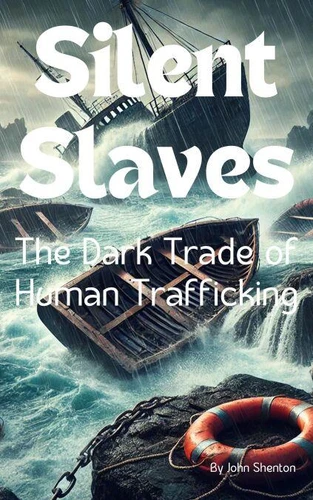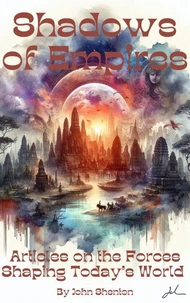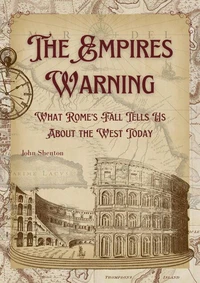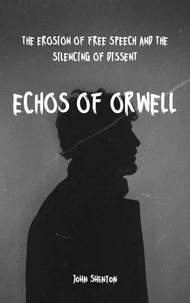Silent Slaves: The Dark Trade of Human Trafficking
Par :Formats :
Disponible dans votre compte client Decitre ou Furet du Nord dès validation de votre commande. Le format ePub est :
- Compatible avec une lecture sur My Vivlio (smartphone, tablette, ordinateur)
- Compatible avec une lecture sur liseuses Vivlio
- Pour les liseuses autres que Vivlio, vous devez utiliser le logiciel Adobe Digital Edition. Non compatible avec la lecture sur les liseuses Kindle, Remarkable et Sony
 , qui est-ce ?
, qui est-ce ?Notre partenaire de plateforme de lecture numérique où vous retrouverez l'ensemble de vos ebooks gratuitement
Pour en savoir plus sur nos ebooks, consultez notre aide en ligne ici
- FormatePub
- ISBN8227848710
- EAN9798227848710
- Date de parution27/10/2024
- Protection num.pas de protection
- Infos supplémentairesepub
- ÉditeurBig Dog Books, LLC
Résumé
In Silent Slaves: The Dark Trade of Human Trafficking, I seek to address the essential question underpinning the entire work: how can we combat the brutal reality of human trafficking effectively and sustainably? The enormity of this crisis calls for a response that is not only comprehensive but also multifaceted, blending stringent law enforcement with compassionate support for survivors and bolstered by international cooperation.
This book represents my perspective on the path forward, presenting a series of policy recommendations and proposed solutions that aim to reduce, if not entirely eliminate, the prevalence of human trafficking into the West and globally. Our present understanding of the trafficking phenomenon has evolved through a harrowing blend of survivor testimonies, law enforcement reports, academic research, and the growing involvement of governments and non-governmental organisations.
Each perspective contributes to a more complete picture of this complex crime, yet the solutions to human trafficking are as varied as the victims themselves. While this book serves as a blueprint, it is by no means exhaustive; rather, it is a framework upon which governments, organisations, and individuals can build. As I propose these measures, I do so with the understanding that human trafficking is a deeply entrenched issue, one that will require resilience, empathy, and relentless vigilance to dismantle.
This book represents my perspective on the path forward, presenting a series of policy recommendations and proposed solutions that aim to reduce, if not entirely eliminate, the prevalence of human trafficking into the West and globally. Our present understanding of the trafficking phenomenon has evolved through a harrowing blend of survivor testimonies, law enforcement reports, academic research, and the growing involvement of governments and non-governmental organisations.
Each perspective contributes to a more complete picture of this complex crime, yet the solutions to human trafficking are as varied as the victims themselves. While this book serves as a blueprint, it is by no means exhaustive; rather, it is a framework upon which governments, organisations, and individuals can build. As I propose these measures, I do so with the understanding that human trafficking is a deeply entrenched issue, one that will require resilience, empathy, and relentless vigilance to dismantle.
In Silent Slaves: The Dark Trade of Human Trafficking, I seek to address the essential question underpinning the entire work: how can we combat the brutal reality of human trafficking effectively and sustainably? The enormity of this crisis calls for a response that is not only comprehensive but also multifaceted, blending stringent law enforcement with compassionate support for survivors and bolstered by international cooperation.
This book represents my perspective on the path forward, presenting a series of policy recommendations and proposed solutions that aim to reduce, if not entirely eliminate, the prevalence of human trafficking into the West and globally. Our present understanding of the trafficking phenomenon has evolved through a harrowing blend of survivor testimonies, law enforcement reports, academic research, and the growing involvement of governments and non-governmental organisations.
Each perspective contributes to a more complete picture of this complex crime, yet the solutions to human trafficking are as varied as the victims themselves. While this book serves as a blueprint, it is by no means exhaustive; rather, it is a framework upon which governments, organisations, and individuals can build. As I propose these measures, I do so with the understanding that human trafficking is a deeply entrenched issue, one that will require resilience, empathy, and relentless vigilance to dismantle.
This book represents my perspective on the path forward, presenting a series of policy recommendations and proposed solutions that aim to reduce, if not entirely eliminate, the prevalence of human trafficking into the West and globally. Our present understanding of the trafficking phenomenon has evolved through a harrowing blend of survivor testimonies, law enforcement reports, academic research, and the growing involvement of governments and non-governmental organisations.
Each perspective contributes to a more complete picture of this complex crime, yet the solutions to human trafficking are as varied as the victims themselves. While this book serves as a blueprint, it is by no means exhaustive; rather, it is a framework upon which governments, organisations, and individuals can build. As I propose these measures, I do so with the understanding that human trafficking is a deeply entrenched issue, one that will require resilience, empathy, and relentless vigilance to dismantle.


















